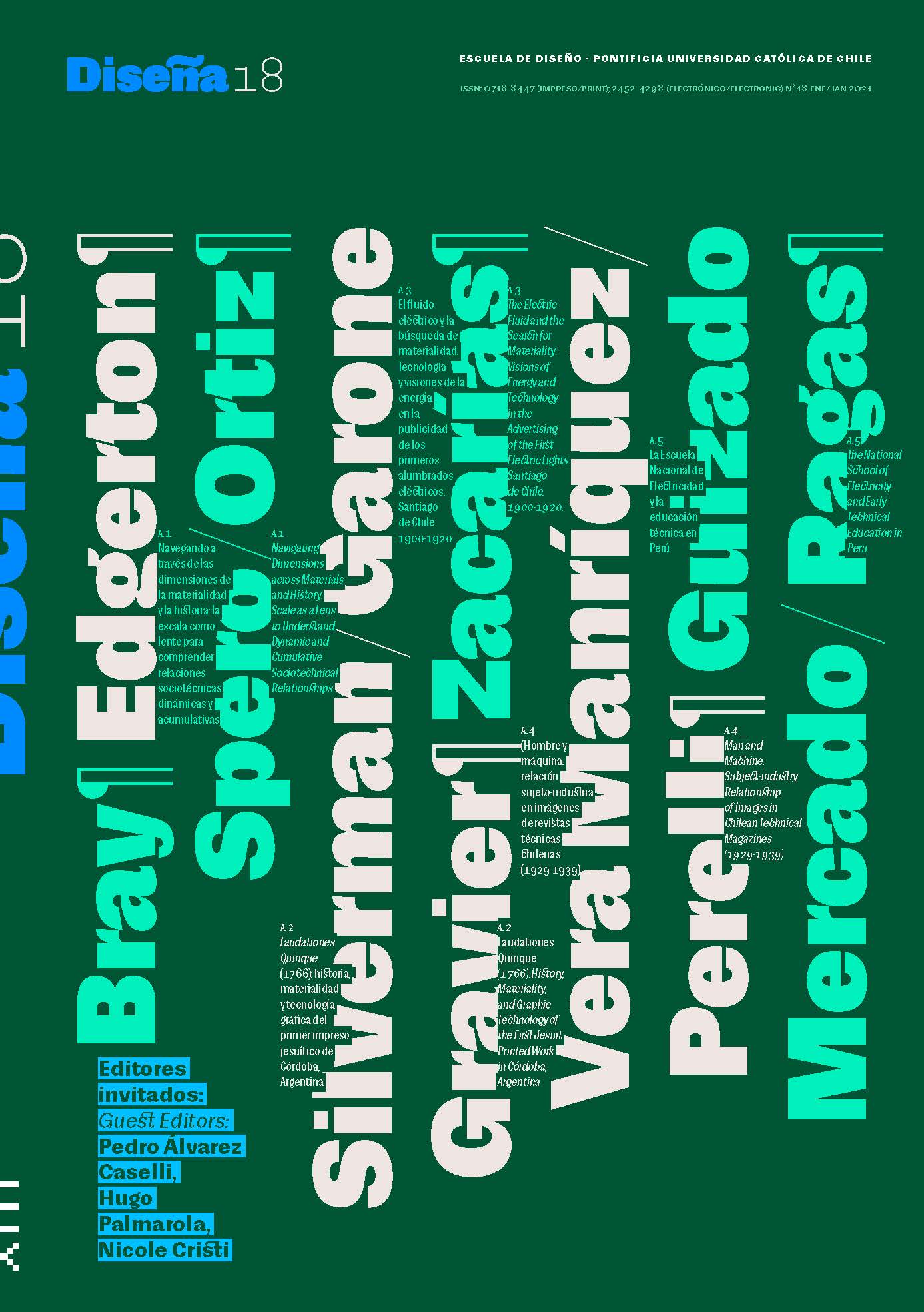The National School of Electricity and Early Technical Education in Peru
Main Article Content
Abstract
The National School of Electricity was an ambitious educational program envisioned to foster the implementation of an electricity network in Peru in the early decades of the 20th century. By merging the programs of two entities (The School of Arts and Crafts and The School of Engineering) into one institution, the promoters of the National School of Electricity aimed to train future local experts and technicians in the most advanced techniques from the Global North. The analysis of interviews, press releases, and the work of its main promoter (Emilio F. Guarini), as well as other materials and resources, allows us to contend that the National School of Electricity exemplifies the structural social fissures that obstructed the country’s modernization programs. Although the project did not come to fruition, it highlights certain aspects (and the limits) of technical education and institutional culture that privileged an aggressive technological modernization over Peruvian nationals’ well-being, especially those in rural areas.
Article Details

This work is licensed under a Creative Commons Attribution-ShareAlike 4.0 International license.
COPYRIGHT NOTICE
All contents of this electronic edition are distributed under the Creative Commons license of "Attribution-ShareAlike 4.0 Internacional" (CC-BY-SA). Any total or partial reproduction of the material must mention its origin.
The rights of the published images belong to their authors, who grant to Diseña the license for its use. The management of the permits and the authorization of the publication of the images (or of any material) that contains copyright and its consequent rights of reproduction in this publication is the sole responsibility of the authors of the articles.
References
ALTSHULER, J., & GONZÁLEZ, M. (1985). El alumbrado eléctrico en La Habana del siglo XIX. Quipu, 2(2), 213–249.
BONFIGLIO, G. (1997). Historia de la electricidad en Lima: Noventa años de modernidad. Museo de la Electricidad.
CORREA GÓMEZ, M. J. (2014). Electricidad, alienismo y modernidad: The Sanden Electric Company y el cuerpo nervioso en Santiago de Chile, 1900-1910. Nuevo Mundo Mundos Nuevos, [On line], Colloques. https://doi.org/10.4000/nuevomundo.66910
DE VECCHI, B., & DE VECCHI, C. (1987). Primeros ensayos públicos de la luz eléctrica en la República Mexicana. Quipu, 4(1), 71–80.
Decreto-Ley N° 7039. Estatuto de la Escuela de Ingenieros, Pub. L. No. 7039 (1931). https://docs.peru.justia.com/federales/decretos-leyes/7039-feb-28-1931.pdf
Educación técnica industrial: La enseñanza de la Electricidad en la Argentina y el Perú. (1910, August 5). El Comercio, 2–3.
El Perú en Alemania. (1909, November 17). El Comercio, 2.
El profesor Guarini funda la Escuela de Panamá. (1911, March 31). El Comercio, 2–3.
El regreso de la Comisión de electricistas de la Escuela de Artes y Oficios. (1908, March 24). El Comercio, 1.
Escuela Nacional de Electricidad. A propósito del Sr. Guarini. (1906, January 27). El Comercio, 4.
Escuela Nacional de Electricidad. La primera escuela de ese género en Sud-América. Una conversación con Mr. Guarini. (1906, January 23). El Comercio, 3–4.
GARCÍA-BRYCE, I. L. (2004). Crafting the Republic: Lima’s Artisans and Nation-Building in Peru, 1821-1879. University of New Mexico Press.
GOOTENBERG, P. (1998). Imaginar el desarrollo: Las ideas económicas en el Perú postcolonial. Instituto de Estudios Peruanos.
GUARINI, E. F. (1906a, January 28). Una gran y reciente hidroeléctrica central en Suiza. El Comercio, 6.
GUARINI, E. F. (1906b, March 17). La electricidad y la agricultura. Actualidades, 155, 281–282.
GUARINI, E. F. (1906c, March 24). La electricidad en la agricultura. Actualidades, 156, 304-306.
GUARINI, E. F. (1907a). El porvenir de la industria eléctrica en el Perú. Escuela de Ingenieros.
GUARINI, E. F. (1907b). El problema de la educación técnica, elemental y media en la América Latina: Transformaciones de las escuelas de artes y oficios de las escuelas industriales en Técnicums. Imprenta San Pedro.
KRISTAL, E. (1991). Una visión urbana de los Andes: Génesis y desarrollo del indigenismo en el Perú, 1848-1930. Instituto de Apoyo Agrario.
La enseñanza técnica. (1910, March 13). El Comercio, 2.
Ley N° 990. Excursiones de profesores y alumnos de la Escuela de Ingenieros, Pub. L. No. 990 (1909). https://peru.justia.com/federales/leyes/990-jan-23-1909/gdoc/
LÓPEZ SORIA, J. I. (2012). Historia de la UNI. Vol. 1: Los años fundacionales (1876-1909). Universidad Nacional de Ingeniería.
MAC-LEAN Y ESTENÓS, R. (1944). Sociología educacional del Perú. Talleres Gráficos de Librería e Imprenta Gil.
MARCONE, M. (1995). Indígenas e inmigrantes durante la República aristocrática: Población e ideología civilista. Histórica, 19(1), 73–93.
MARIÁTEGUI, J. C. (1928). Siete ensayos de interpretación de la realidad peruana. Imprenta Minerva.
MONTAÑO, D. (in press). Electrifying Mexico: Technology and the Transformation of a Modern City. University of Texas Press.
Prospecto de la Escuela de Ingenieros. (n.d.). Sanmartí y Cía.
RAGAS, J. (2020). Science and Technology in Modern Latin America. In Oxford Bibliographies. https://doi.org/10.1093/obo/9780199766581-0230
Reglamento de la Escuela de Artes y Oficios [Lima, Perú], (1864).
Sociedad Nacional de Agricultura. Anuncio sobre su próxima charla de la telegrafía y telefonía inalámbrica y su aplicación. (1907, September 21). El Comercio, 3.
SOTO VEJAR, J. E., & SANHUEZA CERDA, C. (2020). El problema eléctrico chileno. Un estudio de caso de controversia sociotécnica (1935-1939). Athenea Digital, 20(3), 2543–2543. https://doi.org/10.5565/rev/athenea.2543
TAFUNELL, X. (2011). La revolución eléctrica en América Latina: Una reconstrucción cuantitativa del proceso de electrificación hasta 1930 | The Electric Revolution in Latin America: A Quantitative Approach to the Electrification Process until 1930. Revista de Historia Económica - Journal of Iberian and Latin American Economic History, 29(3), 327-359. https://doi.org/10.1017/S0212610911000140
Viaje de instrucción de los alumnos electricistas. (1907, January 29). El Comercio, 2.
ZACARÍAS, Y. (in press). La construcción de una ciudad cableada y la extensión del tranvía eléctrico: Electrificación, desarrollo técnico y nuevas configuraciones del espacio urbano. Santiago de Chile, 1890 – 1920. In S. Castillo & M. Mardones (Eds.), La ciudad en movimiento. Estudios históricos sobre transporte colectivo y movilidad en Santiago de Chile, siglos XIX y XX. Universidad Alberto Hurtado.

